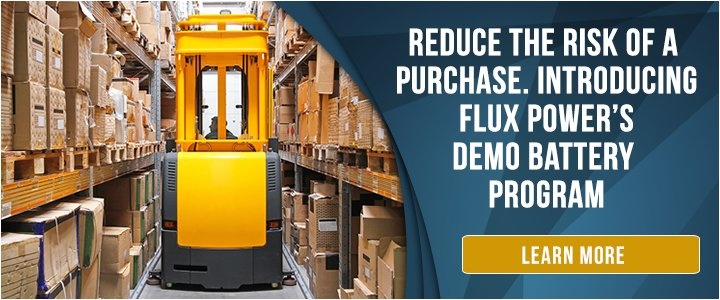For companies thinking about ways to increase productivity and cut long-term costs in their operations, now may be the perfect time to re-evaluate the type of forklift battery you are using to power your lift equipment.
Why now?
Because some companies are seeing a reduction in demand or workload as a result of the coronavirus pandemic. Waiting can be a frustrating prospect for any company that is not used to taking its foot off the pedal. And the truth is, nobody knows what manufacturing will look like when we come out of this pandemic – this only adds to that frustration.
Now may be a good opportunity to take advantage of a lull in business and re-evaluate your forklift battery. Here’s why.
Evaluate What Is Working And Not Working
 Despite the stress and uncertainty felt by many companies right now, re-evaluating systems and exploring what is working and not working in your current production process can put you in a better position once it is time to ramp production back up.
Despite the stress and uncertainty felt by many companies right now, re-evaluating systems and exploring what is working and not working in your current production process can put you in a better position once it is time to ramp production back up.
A forklift battery plays a major role in the productivity of a company’s operation. If increasing efficiency is a goal once production resumes to normal levels, it is important to re-evaluate what type of battery you are using and compare your options.
Battery features to look at include:
- Average lifespan - The average lifespan of a lead acid battery is between 1,000 and 1,500 cycles. The average lifespan of a lithium-ion battery, however, is between 2,000 and 3,000 cycles.
- Average run time - The average run time of a lead acid battery is about 5.4 hours, with a safe discharge down to 30% capacity. Lithium-ion batteries typically run about 7.2 hours before requiring a charge and can be safely discharged down to 20% capacity.
- Charging times - Lead acid batteries require 8 hours of charging time and another 8 hours to cool down. Lithium-ion batteries take just 1 to 2 hours to charge and can be opportunity charged in between shifts or while employees are on break.
- Labor costs - Lead acid batteries have a more labor intensive charging process. With lead acid batteries, an operator must use special lifting equipment to remove the battery and place it on a storage rack for charging. After the battery charges and cools for a total of 16 hours, they must place the battery back into the equipment. Lithium-ion batteries remain in the equipment during charging, so no removal is required.
- Safety considerations - Lead acid batteries present several safety concerns, including a risk for the highly-toxic sulfuric acid to spill when workers “water” the batteries. If lead acid batteries overcharge, the electrolyte solution can overheat and increase pressure inside the battery, leading to an explosion. Lithium-ion batteries do not require water maintenance and there is minimal risk for overheating. Leaving the battery installed in the lift equipment during the charging process also reduces the risk for injuries to operators.
For multi-shift operations, or companies that are considering expanding to multi-shift operations, the above features can be especially important to consider when re-evaluating your needs.
Our article, Lithium Battery Price: Good Investment?, explores how these battery features influence whether lithium-ion batteries are a good long-term investment for many companies.
Reclaim Square Footage
Swapping out lead acid batteries for lithium-ion batteries can allow a company to reclaim square footage in its facility.
When companies use lead acid batteries to power their equipment, they must dedicate space for the charging and cooling processes. This is because temperature control is very important with lead acid batteries, which can get very hot while charging.
When lead acid batteries reach their peak charge, they can leak explosive gas. A separate area for charging and the required cooldown period afterward helps ensure workers remain safe should this occur.
By swapping out lead acid batteries for lithium-ion batteries, warehouse space that is currently dedicated to the charging and cooling of lead acid batteries can be used for a more beneficial purpose.
Test Out A Battery
For companies that are considering changing the batteries they use to power their lift equipment, it is a great idea to try a demo battery.
This gives your company an opportunity to see a lithium-ion battery in action and determine how it will benefit your operation before making a purchasing decision.
Requesting a demo battery will allow you to see how competitive lithium-ion battery technology is for your operation. And, once production is ramped back up, your company can be in a better position to achieve higher levels of efficiency and productivity.












